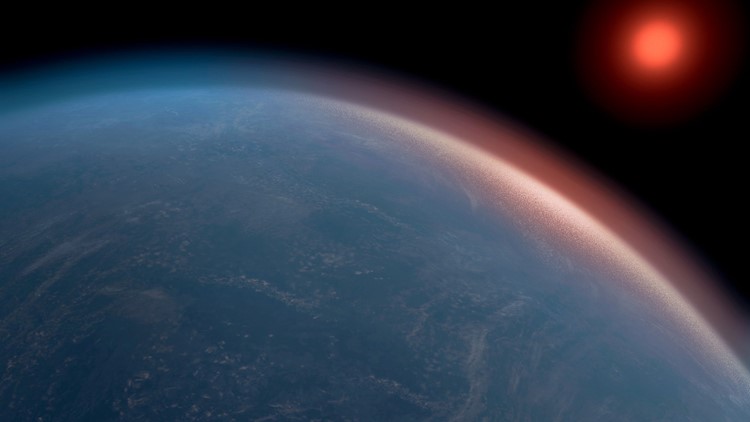A university student from Australia made a joint discovery of a planet the size of Earth located 40 light-years from our planet.
A newly discovered Earth-sized planet has been discovered by a university student from Australia with strong possibilities of having life on it. Shishir Dholakia, thirty two years old astrophysics Ph. D. scholar of the University of Southern Queensland, being the member of the international discovery team, was actively involved in this discovery. In the present journal, the results are published in the Monthly Notices of the Royal Astronomical Society.
Dholakia said that he and his colleagues were thrilled when they got the notion that they were dealing with a planet that is approximately the same size as earth, and it may has desirable and moderate climate. The planet, termed Gliese 12b, lies only forty light years away and being relatively close in terms of astronomical pin point. This relation leads to further studies and reviews.
Liquid water is one of the key elements that define the potential capability for a planet to harbor life, and Gliese 12b holds possibilities in this aspect. Dholakia enriched his opinion by stating that searching for bodies that could contain liquid water means continuing the search for extraterrestrial life.
Further, Gliese 12b seems to be the same size as the earth, or possibly even slightly lesser than that of Venus. It is located in the wrong direction from Earth, the Pisces constellation, orbiting around a cool red dwarf star known as the Gliese 12. Gliese 12 has an apparent magnitude of 6 point 15 and has approximately one quarter of the diameter of the sun with a surface temperature of sixty degrees of that of the sun.
Dr Dholakia, who is also an alumnus of the University of Edinburgh, lead the team that worked in tandem with NASA to confirm Gliese 12b. While getting to the planet might not be possible in the near future, it is relatively close, which enables astronomers to analyze it through the largest space telescopes in order to discover the content of its atmosphere.
This finding is therefore significant especially given an ongoing research on possibility of existence of lives beyond earth. As per the observations made by Dholakia and his group, the research work is in the right direction in the field of study of exoplanets, and we are steadily making progress towards demystifying the universe.
Which may give clues as to what our solar system is like.
Earth and Venus are perfect examples of how the presence or absence of a given atmosphere can have a determining effect on a planet’s surface characteristics. As a place suitable for life, Earth, stands in striking contrast to Venus that has temperatures that could melt lead.
The difference can be explained by the fact that Venus is covered with a toxic atmosphere which does not allow for any amount of life. Hence, on the assumption that science holds merit, scientists think that studying a planet located between Earth and Venus and receiving similar amounts of solar radiation could help fill in the gap of why the two planets are so dissimilar.
As much as the researcher described the process at times as being worrisome, overall the researcher described enjoying his work.
Data obtained from the National Aeronautics and Space Administration (NASA) suggest that by observing changes in light from tens of thousands of stars, the Transiting Exoplanet Survey Satellite (TESS) is employed. This can help scientists to detect the phenomenon known as “transits”, which are short and periodic reductions in the brightness of a star due to the presence of orbiting planets.
It is easier to search for Earth-like planets around these red dwarfs as they are smaller stars, therefore, their dimming is much higher. In addition, red dwarfs have a significantly smaller mass; that causes star to move more vigorously or have a larger reflex motion due to the existence of a neighboring planet.
Through an analysis of exoplanet targets, NASA discovered that Gliese 12b was viable for examination with the JWST.
A well-known astronomer from the US, Michael Brown from the California Institute of Technology, also thinks that there can be another planet hiding closer than anything we know. ABC interview revealed that he has stated that one had to struggle to imagine a solar system without “Planet Nine.
Brown has been advocating that the highly eccentric orbits of different bodies in the vicinity – Neptune indicate the presence of a ninth planet. However, much effort has been put in the search for this hypothetical planet to date it, but it has not been found yet.
Taking a cue from Brown and his team’s recent, still unsubstantiated or peer-reviewed study on the subject, the probability that Planet Nine is a mere fiction is one in a million.
Do not forget to share your opinion with us to provide you with the best posts !




0 Comments